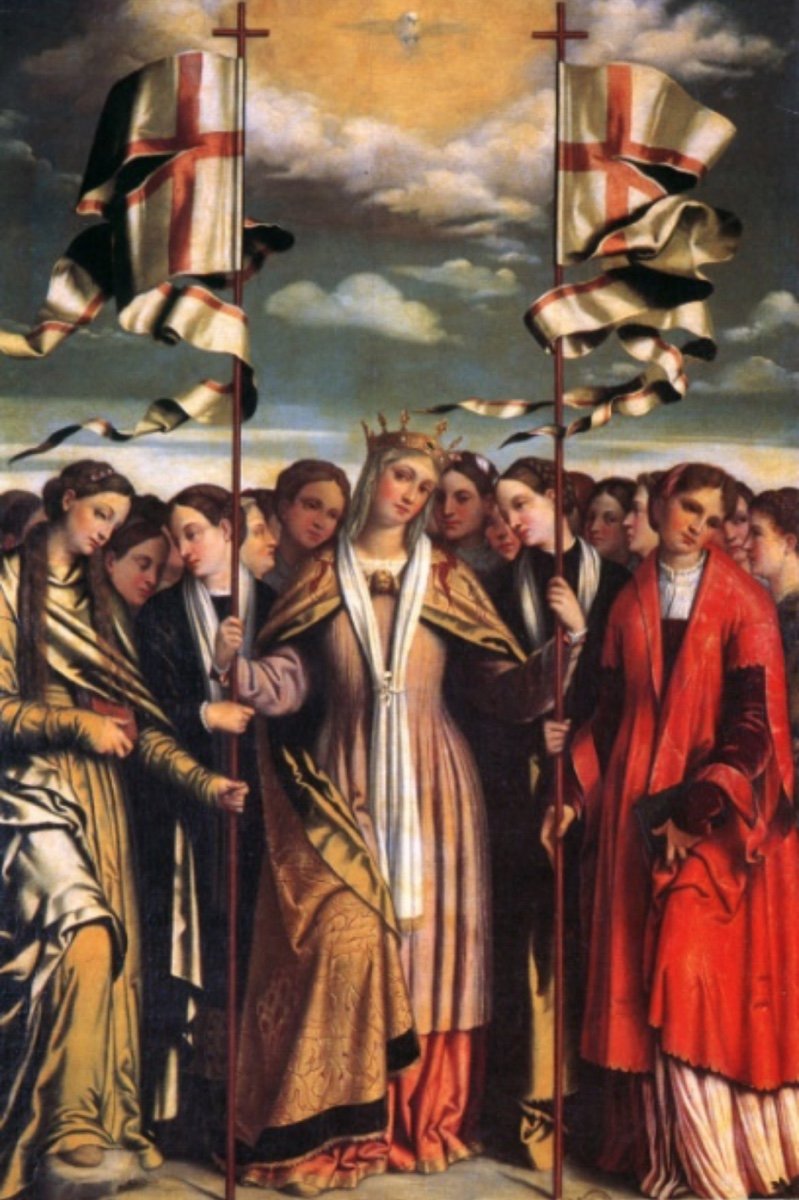St. Ursula
The Legend of St Ursula
The historical evidence of Ursula’s life has been lost in the mist of time. However, the relationship between Angela and Ursula is strong and led to Angela placing her Company under the patronage of St Ursula. She wanted her companions to be imbued with the Spirit of Ursula.
Legend tells us that Ursula was the daughter of a Christian king living in Britain in the 4th Century. She grew into a young woman of deep faith.
The king of a larger more powerful kingdom asked for her hand in marriage for his son. Fearful of the superior strength of the other king’s army she agreed, however with great confidence she requested that the marriage would not take place until “her husband to be” converted to Christianity and that they undertake a pilgrimage to the Holy Land and Rome. Then on their return they would marry. Eager to have her as his bride the prince agreed to her requests.
Ursula together with her entourage of maidens, companions and "her husband to be" began their pilgrimage to the Holy Land. Strong winds blew them off course and they eventually arrived in Cologne. While Ursula and her companions were in Cologne she had a dream that they would be martyred on their return. Undaunted by this dream she prepared her companions and together they faced their death with great courage, conviction and faith.
At the time in which Angela lived the legend of Ursula and the Virgins of Cologne was wide spread and popular. As a young child Angela and her siblings would have heard the stories from the "Golden Legend" of Jaques de Voragines published in 1475. The Spirit of St Ursula would have captured the imagination of Angela, a young woman of deep faith.
The Spirit of Ursula
A woman of deep courage
A risk taker
A woman of dedication and fidelity to Jesus Christ
A leader of young women
A woman of dignity
An independent woman of her time.
These characteristics resonated with the qualities that Angela would want for her women in the company. Therefore she placed her company under the patronage of St Ursula virgin and martyr.
Ursula in Art
We know much of the legend of St Ursula and her Companions through artistic portrayals from early centuries to the present.
The Dream of Ursula (detail), Carpaccio, 15th Century, Gallerie dell'Accademia, Venice.
One of the most well-known visual representations is "The Life-Cycle of St Ursula" by Carpaccio, painted in the 15th century. This series of paintings is found in the Galleries dell'Academia in Venice. Moretto, a citizen of Brescia and known to Angela, painted St Ursula and her Companions in 1530. It is housed in the Church of San Clemente in Brescia.
The consistent themes in visual representations of St Ursula often are:
as a young woman
as a leader
holding the flag of martyrdom
repeatedly with an arrow symbolising the manner of her death
with women companions
frequently holding a protective cloak around her companions
often in a boat
“I shall always be in your midst, helping your prayers”


